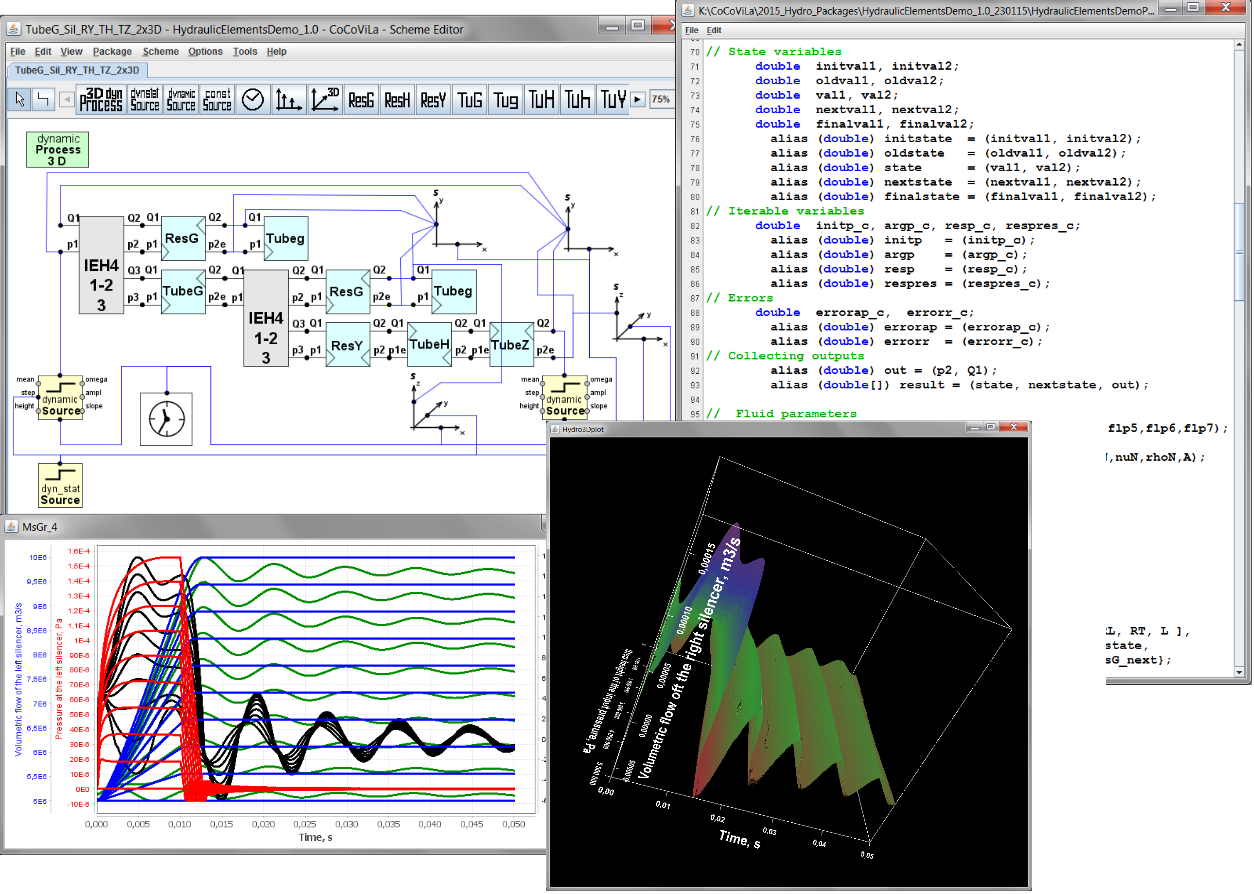CoCoViLa demo package for dynamic simulation of hydraulic elements
The objective of a CoCoViLa demo package for dynamic simulation of hydraulic elements is to demonstrate using multi-pole models for modeling and simulation of real-scale mechatronic systems. The package covers a small part of modeling and simulation systems investigated and developed by the joint research group of the Institute of Cybernetics and the Department of Mechanics at Tallinn University of Technology.
The package includes models of low level hydraulic elements such as hydraulic resistors, hydraulic tubes, interface elements, and also hydraulic fluids, simulation process manager, supporting elements for defining inputs and outputs and few example tasks for simulation hydraulic schemes.
Theoretical basis for the package is described in [1, 2]. Some of example simulation tasks are taken from the paper. Some of the simulation results differ from the ones described in the paper as multi-pole models, simulation engine and some utilities have been modified (advanced) since the paper was published.

- Grossschmidt, G., Harf, M. Simulation of hydraulic circuits in an intelligent programming environment (Part 1). In: Proceedings of the 7th international Conference of DAAAM Baltic INDUSTRIAL ENGINEERING, Editor R. Kyttner, 22-24 April 2010, Tallinn, Estonia, 148 -153.
- Grossschmidt, G., Harf, M. Simulation of hydraulic circuits in an intelligent programming environment (Part 2). In: Proceedings of the 7th international Conference of DAAAM Baltic INDUSTRIAL ENGINEERING, Editor R. Kyttner, 22-24 April 2010, Tallinn, Estonia, 154 -161.